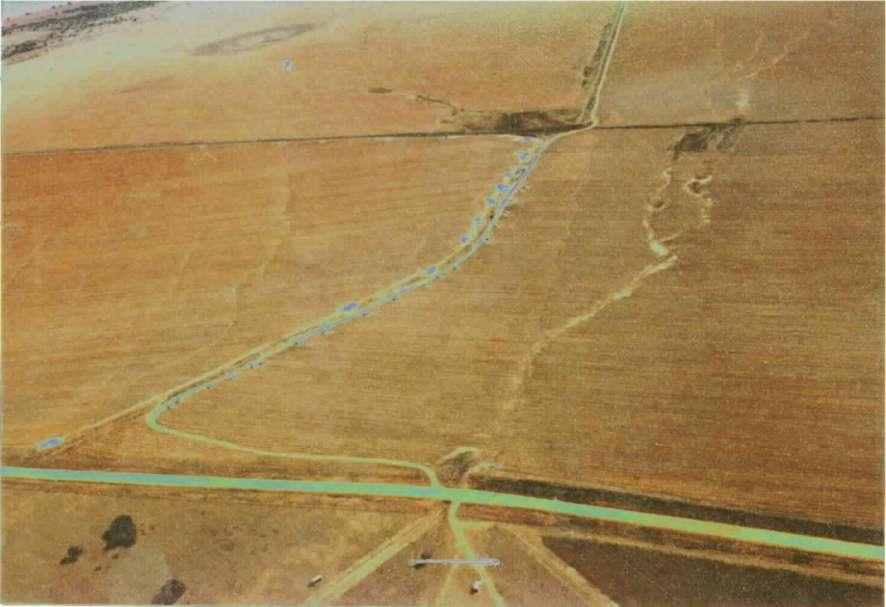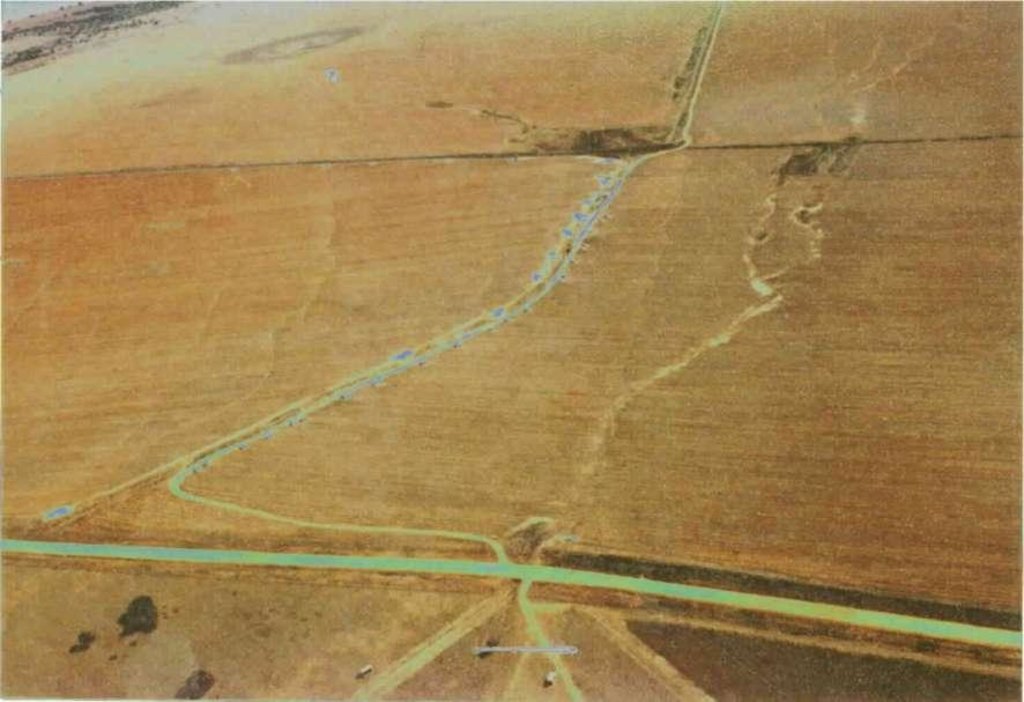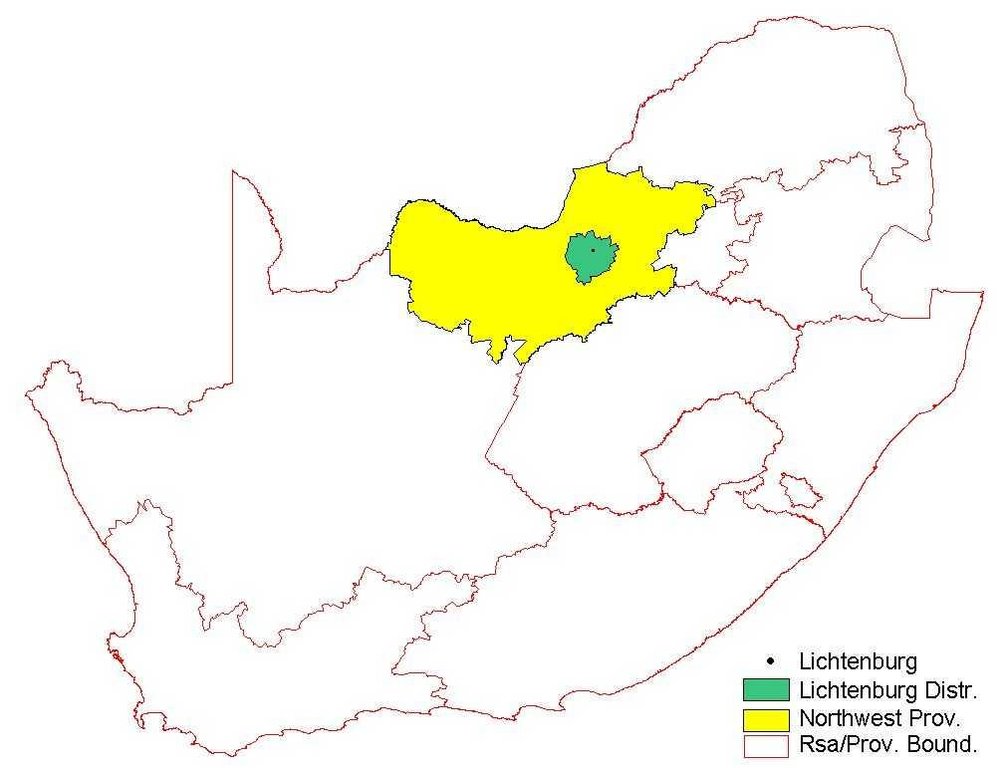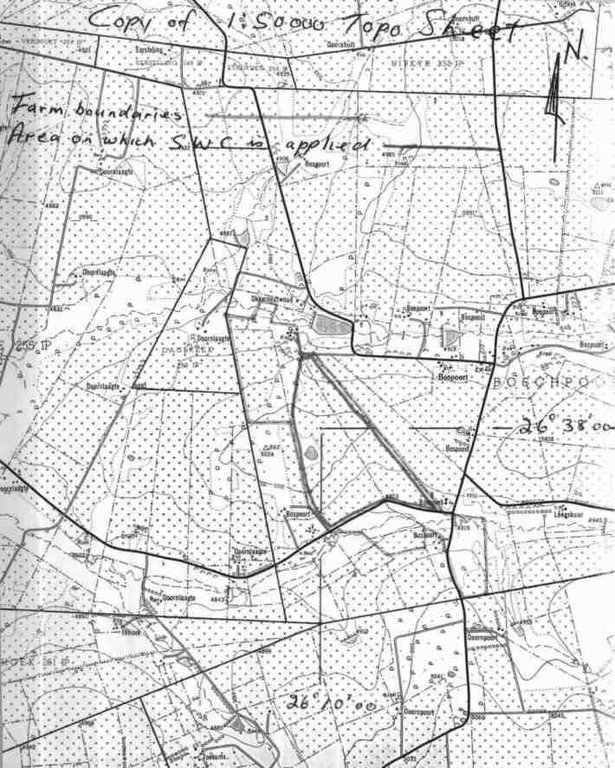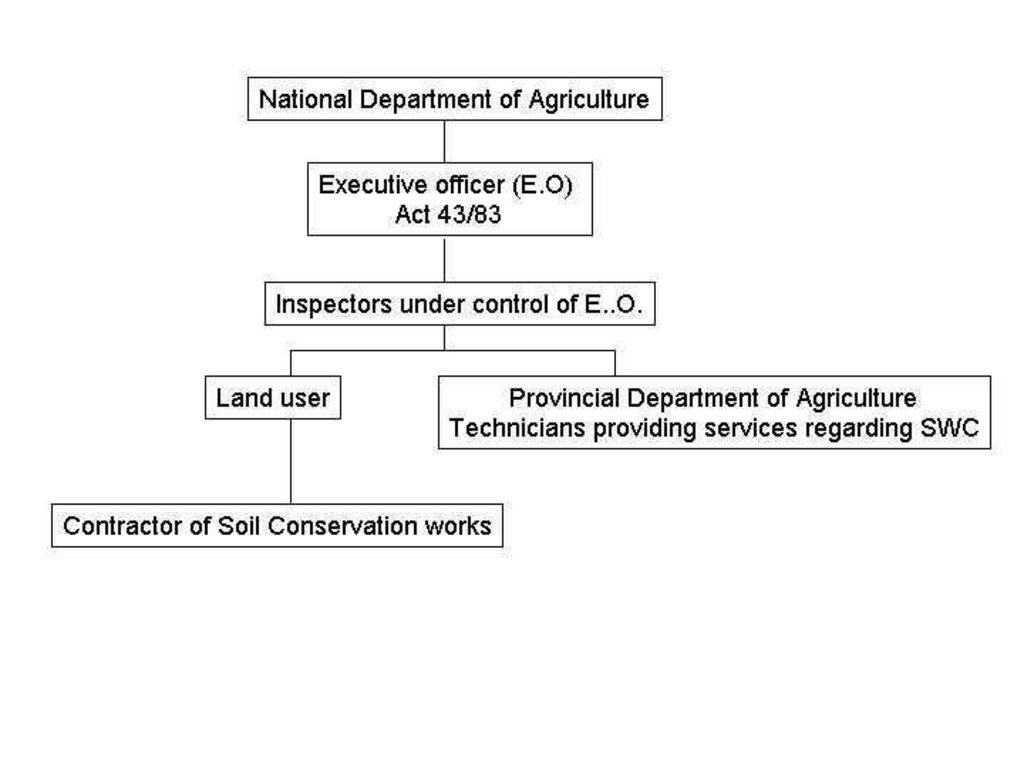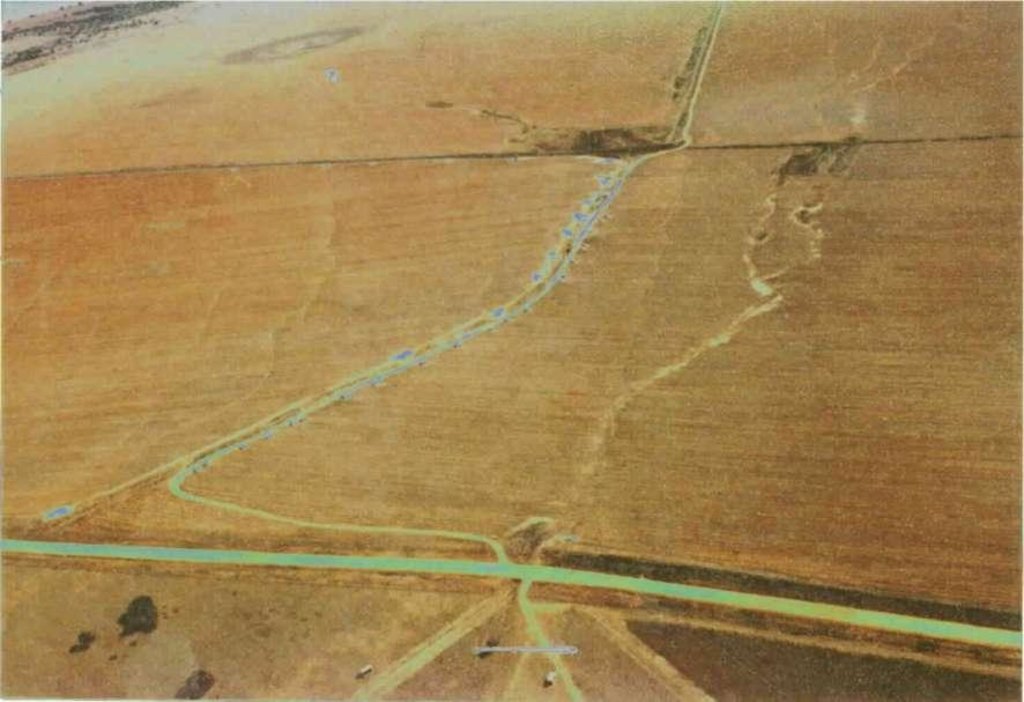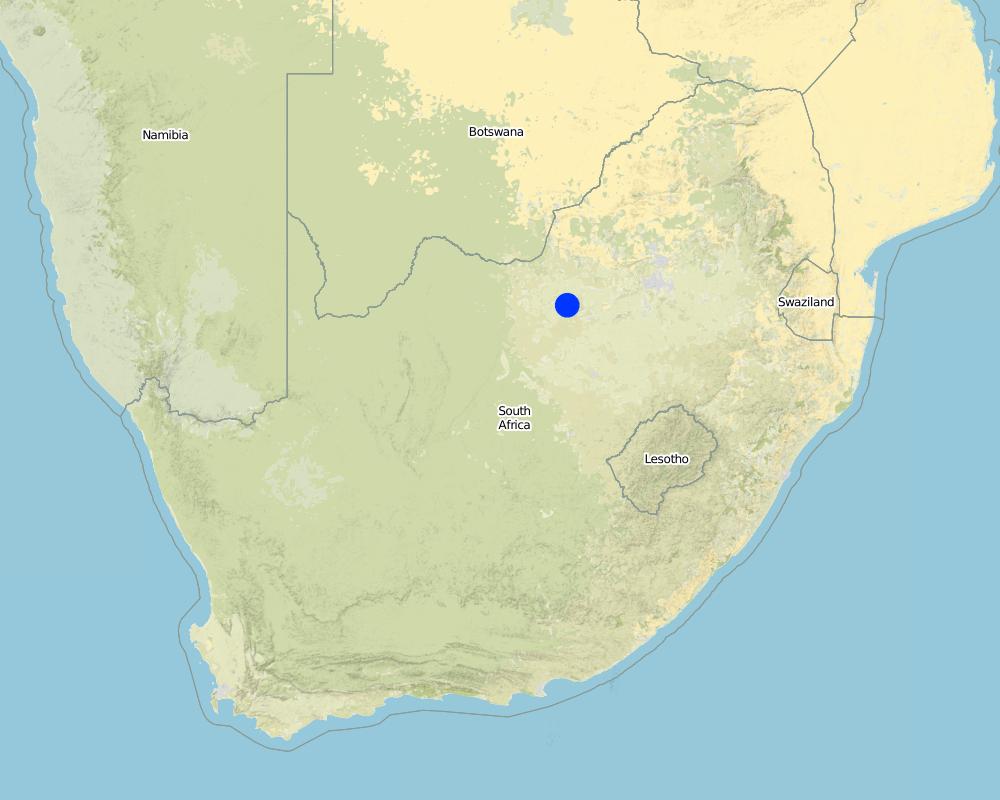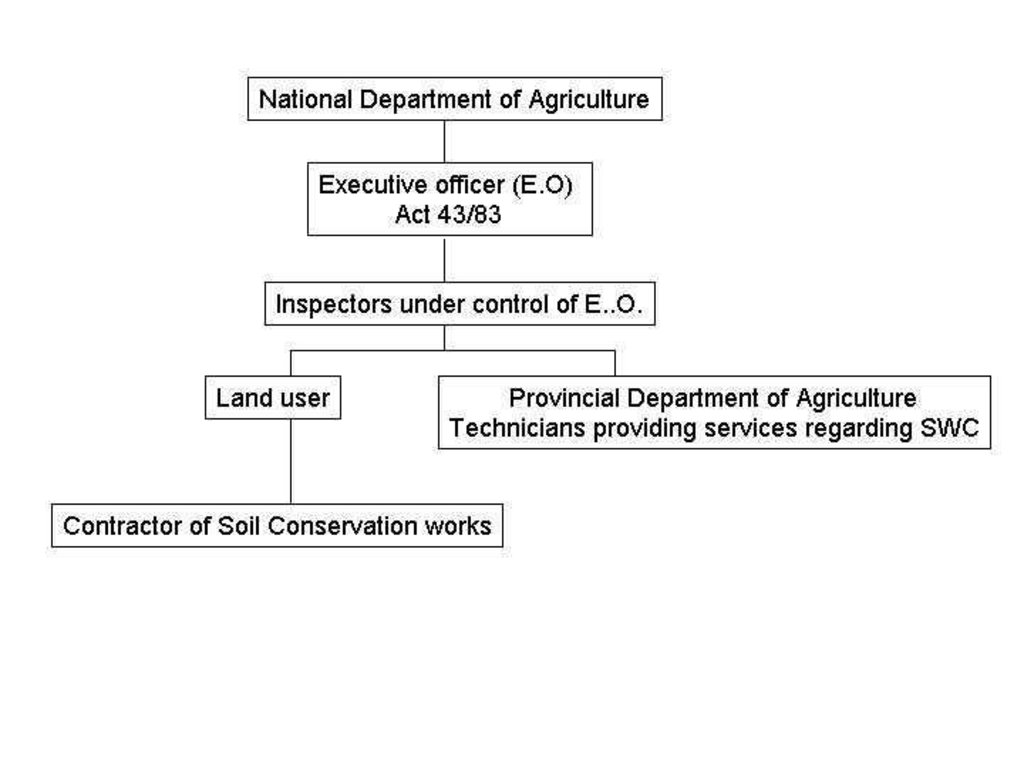All participant - Law enforcement [South Africa]
- Creation:
- Update:
- Compiler: Pieter J. Theron
- Editor: –
- Reviewer: Fabian Ottiger
approaches_2647 - South Africa
View sections
Expand all Collapse all1. General information
1.2 Contact details of resource persons and institutions involved in the assessment and documentation of the Approach
1.3 Conditions regarding the use of data documented through WOCAT
The compiler and key resource person(s) accept the conditions regarding the use of data documented through WOCAT:
Yes
1.4 Reference(s) to Questionnaire(s) on SLM Technologies
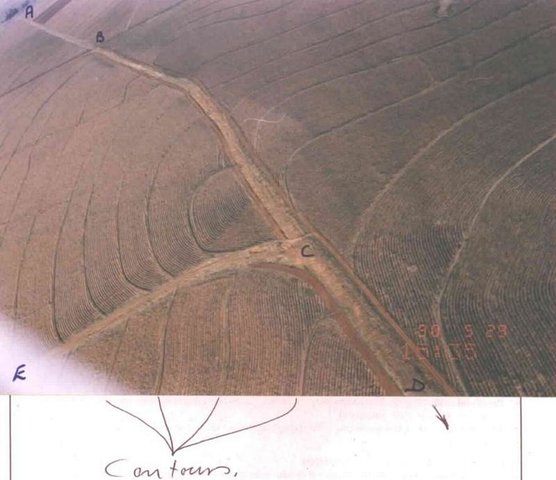
Water run-off control plan on cultivated land [South Africa]
Artificially built watercourses with contour banks with a specific gradient
- Compiler: Ursula Gaemperli
2. Description of the SLM Approach
2.1 Short description of the Approach
Ordering a land user through the act to implement the SWC.
2.2 Detailed description of the Approach
Detailed description of the Approach:
Aims / objectives: The overall purpose of this approach was (and still is) to make the land user aware of SWC, as it was obvious that he does not intend to solve the problem of soil erosion by himself. The objective was to convince the land user to implement the technology (water run-off control planning) by building the necessary soil conservation works (via watercourses and contours and explaining in detail to him what this technology comprises:
Stages of implementation: first to make the necessary surveys from which the watercourses could be designed, then to construct the watercourse. Thirdly the watercourses must be established with a perennial grass and lastly the land user must see to it that the necessary contours are surveyed and constructed and maintained. It was also explained to the land user (farmer) that the Provincial Department of Agriculture Technical division could provide him with services regarding the planning surveying and design of the soil conservation works. The major objective was to convince the farmer that if he did not comply with the directive, legal steps could be taken against him. Fortunately, he was convinced and put in an application for a water run-off control plan after he harvested his crop in 1992. Due to a shortage in personnel, surveying only started in November 1993.
2.3 Photos of the Approach
2.5 Country/ region/ locations where the Approach has been applied
Country:
South Africa
Region/ State/ Province:
North West Province
Map
×2.6 Dates of initiation and termination of the Approach
Indicate year of initiation:
1991
Year of termination (if Approach is no longer applied):
1995
2.7 Type of Approach
- project/ programme based
2.8 Main aims/ objectives of the Approach
The Approach focused on SLM only
1.) Construction of watercourses 2.) Establish grass in the watercourses 3.) Construction of contours
The SLM Approach addressed the following problems: The attitude of the farmer and to prevent conflict. To convince the farmer to give his co-operation without treading him with legal steps.
2.9 Conditions enabling or hindering implementation of the Technology/ Technologies applied under the Approach
social/ cultural/ religious norms and values
- hindering
Poor conservation ethic, resistance to change
Treatment through the SLM Approach: Discussions
availability/ access to financial resources and services
- hindering
This technology can be expensive although being subsides by government
Treatment through the SLM Approach: Subsidies
legal framework (land tenure, land and water use rights)
- enabling
The existing land ownership, land use rights / water rights greatly helped the approach implementation: The importance of the owners responsibility to contribute towards sustainability for the benefit of descendants.
knowledge about SLM, access to technical support
- hindering
Lack of technical knowledge on how to solve the problem
Treatment through the SLM Approach:
3. Participation and roles of stakeholders involved
3.1 Stakeholders involved in the Approach and their roles
- local land users/ local communities
Only one farmer
- local government
Provincial Government to deliver services and administrate the scheme
- national government (planners, decision-makers)
Responsible for law enforcement
3.2 Involvement of local land users/ local communities in the different phases of the Approach
| Involvement of local land users/ local communities | Specify who was involved and describe activities | |
|---|---|---|
| initiation/ motivation | none | |
| planning | none | |
| implementation | none | |
| monitoring/ evaluation | none | |
| Research | none |
3.3 Flow chart (if available)
3.4 Decision-making on the selection of SLM Technology/ Technologies
Specify who decided on the selection of the Technology/ Technologies to be implemented:
- SLM specialists alone
Explain:
directive (top-down). Directive from the act after discussed with the land user.
Decisions on the method of implementing the SLM Technology were made by by SLM specialists alone (top-down). directive (top-down). Including discussions with farmer
4. Technical support, capacity building, and knowledge management
4.1 Capacity building/ training
Was training provided to land users/ other stakeholders?
Yes
Form of training:
- farmer-to-farmer
Subjects covered:
Informal regarding how to maintain the soil conservation works and how to cultivate the lands with contours.
4.2 Advisory service
Do land users have access to an advisory service?
Yes
Specify whether advisory service is provided:
- on land users' fields
Describe/ comments:
Convincing and persuasion; Key elements: Understanding of how the technology function, Important aspects of maintenance, Technical support free of charge; 1) Advisory service was carried out through: government's existing extension system 2) Advisory service was carried out through: government's existing extension system; Extension staff: mainly government employees 3) Target groups for extension: land users (one); Activities: Explaining how the technology function.
Advisory service is totally inadequate to ensure the continuation of land conservation activities; A huge amount of cultivated land needs protection through this technology. The government cannot offer enough personnel to deliver the service.
4.4 Monitoring and evaluation
Is monitoring and evaluation part of the Approach?
Yes
Comments:
technical aspects were ad hoc monitored through observations
area treated aspects were ad hoc monitored through observations
There were several changes in the Approach as a result of monitoring and evaluation: The farmer is well informed how the technology function as well as how to maintain it.
5. Financing and external material support
5.1 Annual budget for the SLM component of the Approach
If precise annual budget is not known, indicate range:
- 2,000-10,000
Comments (e.g. main sources of funding/ major donors):
Approach costs were met by the following donors: government (national - Subsidy scheme): 70.0%; other (land owner (farmer)): 30.0%
5.3 Subsidies for specific inputs (including labour)
If labour by land users was a substantial input, was it:
- paid in cash
Comments:
Contractor
5.4 Credit
Was credit provided under the Approach for SLM activities?
No
6. Impact analysis and concluding statements
6.1 Impacts of the Approach
Did the Approach help land users to implement and maintain SLM Technologies?
- No
- Yes, little
- Yes, moderately
- Yes, greatly
The farmer experienced that normal rainfall is evenly spreaded. In cases of heavy rain storms the soil is effectively protected against erosion.
Did other land users / projects adopt the Approach?
- No
- Yes, little
- Yes, moderately
- Yes, greatly
This approach is also applied on overgrazing deduced weeds and other problems regarding resource conservation.
6.3 Sustainability of Approach activities
Can the land users sustain what has been implemented through the Approach (without external support)?
- no
If no or uncertain, specify and comment:
Not the approach itself but the effect of the approach.
6.4 Strengths/ advantages of the Approach
| Strengths/ advantages/ opportunities in the land user’s view |
|---|
| Trigger what he already planned to do and implement the technology (How to sustain/ enhance this strength: Sound maintenance) |
| Strengths/ advantages/ opportunities in the compiler’s or other key resource person’s view |
|---|
| Supported by legislation (How to sustain/ enhance this strength: Sound persuasion skills) |
6.5 Weaknesses/ disadvantages of the Approach and ways of overcoming them
| Weaknesses/ disadvantages/ risks in the land user’s view | How can they be overcome? |
|---|---|
| Dislike of law enforcement | Sound persuasion skills from inspector |
| Resistance to cooperate | Sound persuasion skills from inspector |
| Weaknesses/ disadvantages/ risks in the compiler’s or other key resource person’s view | How can they be overcome? |
|---|---|
| Great possibility for confrontation | Sound persuasion skills |
7. References and links
7.1 Methods/ sources of information
- field visits, field surveys
- interviews with land users
Links and modules
Expand all Collapse allLinks

Water run-off control plan on cultivated land [South Africa]
Artificially built watercourses with contour banks with a specific gradient
- Compiler: Ursula Gaemperli
Modules
No modules


